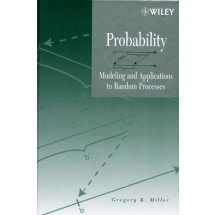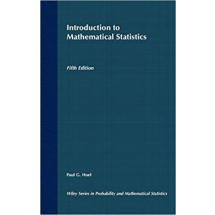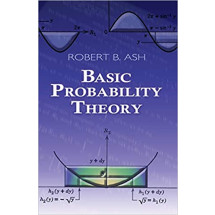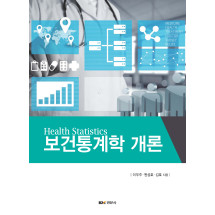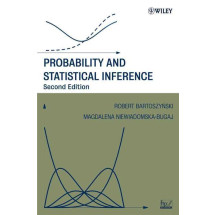For junior/senior undergraduates taking probability and statistics as applied to engineering, science, or computer science.
This classic text provides a rigorous introduction to basic probability theory and statistical inference, with a unique balance between theory and methodology. Interesting, relevant applications use real data from actual studies, showing how the concepts and methods can be used to solve problems in the field. This revision focuses on improved clarity and deeper understanding.
MyStatLabTM is not included. Instructors, contact your Pearson representative for more information.
MyStatLab is an online homework, tutorial, and assessment program designed to work with this text to engage students and improve results. Within its structured environment, students practice what they learn, test their understanding, and pursue a personalized study plan that helps them absorb course material and understand difficult concepts.
Hallmark Features
- The balance between theory and applications offers mathematical support to enhance coverage when necessary, giving engineers and scientists the proper mathematical context for statistical tools and methods.
- Mathematical level: this text assumes one semester of differential and integral calculus as a prerequisite.
- Calculus is confined to elementary probability theory and probability distributions
- Matrix algebra is used modestly in coverage of linear regression material
- Linear algebra and the use of matrices are applied in Chapters 11–15, where treatment of linear regression and analysis of variance is covered.
- Compelling exercise sets challenge students to use the concepts to solve problems that occur in many real-life scientific and engineering situations. Many exercises contain real data from studies in the fields of biomedical, bioengineering, business, computing, etc.
- Real-life applications of the Poisson, binomial, and hypergeometric distributions generate student interest using topics such as flaws in manufactured copper wire, highway potholes, hospital patient traffic, airport luggage screening, and homeland security.
- Statistical software coverage in the following case studies includes SAS® and MINITAB®, with screenshots and graphics as appropriate:
- Two-sample hypothesis testing
- Multiple linear regression
- Analysis of variance
- Use of two-level factorial-experiments
- Interaction plots provide examples of scientific interpretations and new exercises using graphics.
- Topic outline
- Chapter 1: elementary overview of statistical inference
- Chapters 2–4: basic probability; discrete and continuous random variables
- Chapters 2–10: probability distributions and statistical inferences
- Chapters 5–6: specific discrete and continuous distributions with illustrations of their use and relationships among them
- Chapter 7: optional chapter covering the transformation of random variables.
- Chapter 8: additional materials on graphical methods; an important introduction to the notion of sampling distribution
- Chapters 9–10: one and two sample point and interval estimation
- Chapters 11–15: linear regression; analysis of variance
-


